This feature was taken from our Fleet Leadership special report
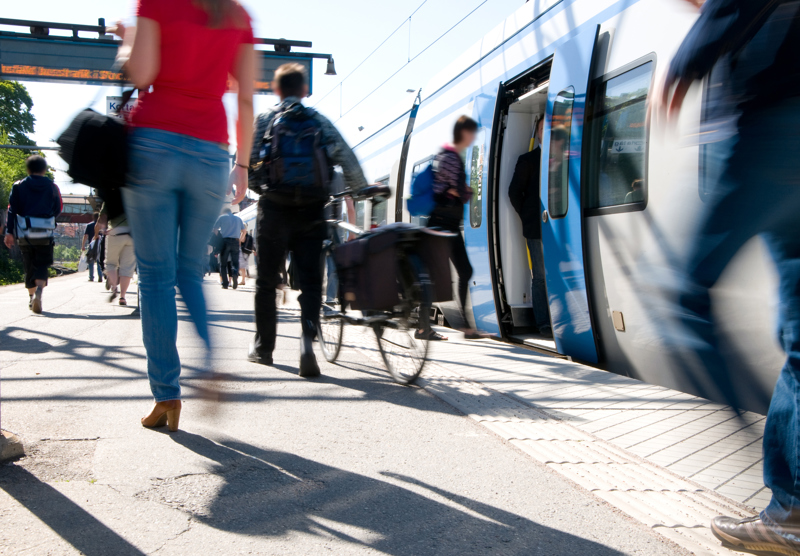
While the ultimate aim of a sustainable mobility strategy is to reduce CO2 emissions, there is much more to it than just transitioning to electric vehicles (EVs).
This ignores the benefits using alternative transport modes can have on the wider environment, such as cutting costs and congestion, while having employees walk or cycle also has health and wellbeing benefits.
The recent emergence of solutions such as mobility-as-a-service (MaaS) and shared transport looked likely to turbocharge the use of alternative sustainable travel technologies, but their adoption has been much slower than many experts predicted.
“We don’t see such great demand and buzz around mobility solutions – and particularly shared mobility – since the Covid pandemic,” says Paul Hollick, chair of the Association of Fleet Professionals (AFP).
“It’s taken a back seat as everything has been dwarfed by decarbonisation, particularly electrifying fleets.
“There’s always encouragement from an employer around cycle-to-work schemes and taking the bus or train wherever possible, but it hasn’t got the same injection and pace as it had pre-Covid.
“I think it will definitely come back, but at the moment I think Covid has shaped a market in the UK that is predominantly car-centric.”
Unlike in the UK, mobility solutions had already become established in some mainland European countries before the Covid pandemic, particularly Benelux and Germany where there are now well-developed markets.
“The UK is probably a step or two behind at present, but there are signs that is beginning to change,” says John Peters, head of consultancy at Arval UK.
“In conversations with businesses we are seeing increasing willingness to look at non-traditional mobility options, especially as getting around city centres becomes increasingly challenging.
“In our view, mobility options are now a known and proven quantity, and the expertise exists to employ them rapidly and successfully where there is a business need.
“Really, what is holding back wider adoption in the UK is simply awareness.”
The right option
Energy Saving Trust (EST) recommends introducing a sustainable travel hierarchy to outline the order in which modes of transport should be considered, and has produced an example (see bottom of facing page) to help organisations develop their own.
While it focuses on moving people around, the principles can also apply if an organisation is transporting loads or equipment.
The hierarchy works by starting at the top for the most sustainable method, and if this is not suitable then the employee goes down the order until they find a suitable solution.
It begins with digital communications, such as telephone calls, messaging or video conferences, as these eliminate the need to travel altogether.
If this is not possible, EST suggests considering walking or wheeling (for wheelchair users), then cycling, using public or shared transport, driving/car sharing in EVs, driving/car sharing ICE (internal combustion engine) vehicles, then, finally, air travel.
Many employees who regularly travel for business may already have an EV as a company car so may automatically default to that option – and it fulfils the desire to reduce CO2 emissions – but EST says it is important not to automatically dismiss the options above it in the hierarchy.
This is because as well as achieving the objective of cutting emissions, opting for digital communication, walking and wheeling, cycling, or using public transport also has wider benefits.
These choices either take all vehicles off the road or – in the case of public transport – significantly reduces their numbers, cutting congestion and pollutants such as particulate matter from tyres.
Walking, wheeling and cycling – collectively known as active travel – also has health benefits for the employee.
Research has found that walking regularly can reduce the risk of cardiovascular disease by 35%, while cycling builds muscle and is linked to improved heart and lung capacity. Active travel can also manage stress and weight, adds EST.
Beat the traffic
In towns and cities, cycling can also be faster than driving as bikes can use cycle paths to get to their destinations, avoiding traffic queues.
Courier CitySprint reports that e-cargo bikes can deliver up to 50% faster than a small diesel van in urban areas and save four tonnes of CO2 per bike, per year, while Oxford estate agency Strutt & Parker leases an electric bike to enable staff to carry out client meetings.
“My team and I need to travel across the city to meet clients and attend appointments in the most efficient and sustainable way possible,” says George Hughes, head of sales at Strutt & Parker.
“Our first electric bike is now being used, and the team’s feedback is fantastic.”
However, active travel will not be suitable for many business journeys because, for example, of the distance or route involved, or the employee may need to carry equipment or supplies which are too big or heavy for an e-cargo bike.
In these instances, EST’s travel hierarchy suggests the next best options are to either car-share or drive an electric vehicle, and if a zero-emission option is not available, then to use an ICE vehicle.
It is at this point that an employee who does not have a company vehicle may decide to drive their own car for business use and then claim for the mileage travelled afterwards. This is known as grey fleet.
Many organisations discourage this as they find difficult to have control over risk and emissions. Instead, they often offer an alternative vehicle, such as a pool car, a vehicle from a car club, or daily rental vehicles.
Review grey fleet travel
“Reviewing grey fleet travel is central, because using their own car is so often seen by employees as the default choice – particularly if they commute by car,” says Andy Bland, head of business rental UK & Ireland at Enterprise Mobility.
“Selecting lower-emission options has to be just as easy and convenient as grey fleet to nudge employees towards using them.
“Sometimes just ensuring EVs are at the top of the list when an employee books a vehicle online is enough to prompt a better choice.”
Hollick says some businesses are reducing the number of vans they operate in London in favour of engineers using public transport.
Operational models are being adopted where technical staff undertaking visits to domestic and business premises have parts shipped to the customer’s address in advance and are able to complete jobs with just a toolkit they can carry, he says.
“We’d underline first of all that this is probably not a widespread trend, but it is an interesting one that we are seeing in London and which is probably also viable in the centre of a handful of other major UK cities,” adds Hollick.
“Driving, maintaining and storing vans in concentrated urban areas is increasingly difficult, and some businesses have been looking for new solutions.
“One of these is to only use vans where necessary and for engineers to get around by public transport. In any mega city, the best way of moving people is generally by tube, train or bus.
“It’s something that can work effectively, but does have obvious limitations. Employees may need tools and other equipment that can’t easily be moved around by hand or on public transport, for example, while delivering parts to customer premises ahead of the visit can be a hit-and-miss affair.
“However, there are also instances where it can work well.”
Data is key
When creating a sustainable mobility strategy, fleet decision-makers should approach it in a similar manner to any other area of fleet management, as well as integrate it within their overall fleet strategy, says Peters.
“The starting point should be to ask how mobility can contribute to your business objectives,” he says.
“Typical examples could include a logistics company delivering parcels in a city centre, a hotel group wanting to enhance its services with premium bikes offered on-site, or a real estate business that needs its employees to get around cities more efficiently.
“Consideration should be given to factors such as how mobility options might meet these objectives, likely feedback from customers who will be using these assets and identifying suppliers who can provide the products and services required.
“Once potential solutions have been identified, trials and experimentation are often a useful exercise that provide real-world feedback on mobility concepts and here we work closely with companies to choose metrics, gather data and examine the results before arriving at longer-term decisions.”
An organisation’s data is key to developing a strategy specific to their operations, adds Bland.
“Understanding how employees get to work and then how and when they travel for business once they’re at work is at the heart of an effective policy – and that means having accurate data to hand,” he says.
“We’re seeing more and more fleets wanting a travel policy overhaul. The starting point is consultancy to identify the best choice for every fleet trip that is now required, providing a much broader range of options that stretch from cars to micromobility.”
In today's rapidly changing world, fleet managers aren't just managing vehicles—they're leading critical conversations about strategy, sustainability, and efficiency. And whether you realise it or not, you are at the centre of key decisions that shape your business.
You play a pivotal role where finance, HR, operations, and procurement meet, ensuring cost efficiency, legal compliance, and CSR efforts are realised. Fleet managers are at the heart of driving business success.
Our latest special report on “Fleet Leadership” is packed with insights and strategies to help you become a standout leader in your organisation. Dive into critical topics like mentoring future fleet leaders, aligning fleet policies with business goals, and building sustainable mobility frameworks.


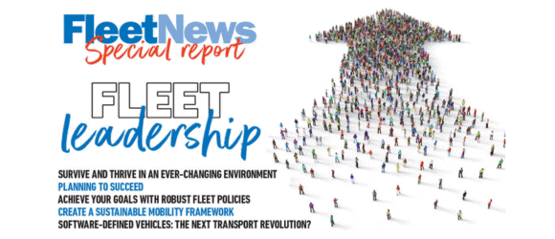



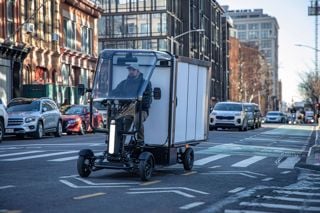
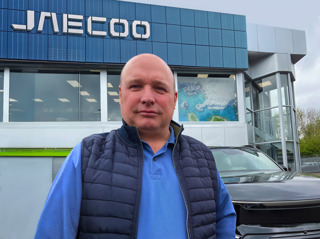


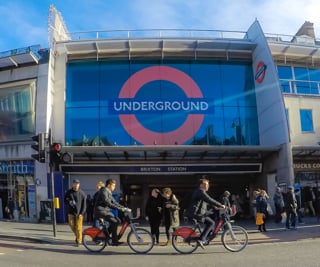












Login to comment
Comments
No comments have been made yet.